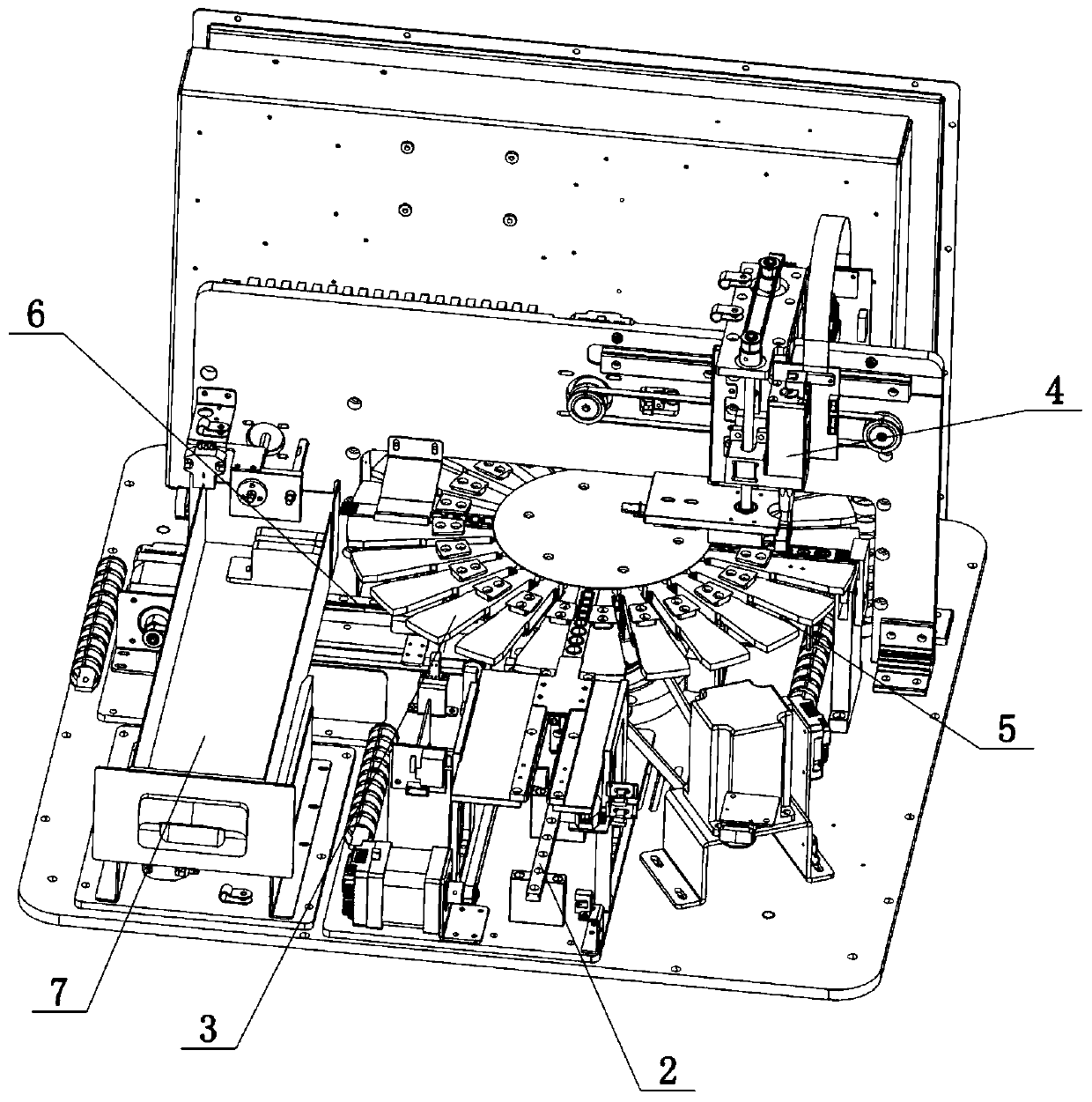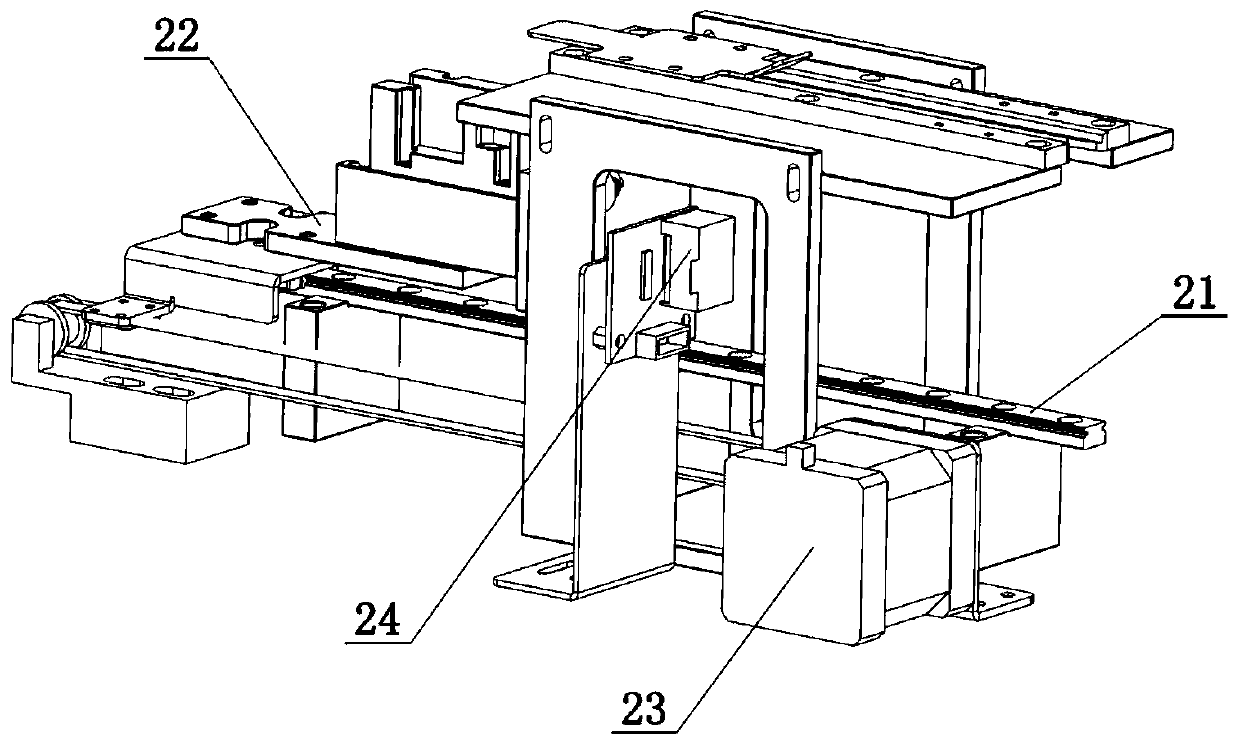Biochemical analyzer
A biochemical analyzer and casing technology, applied in the field of biochemical analyzers, can solve the problems of waste of manpower and material resources, cumbersome and inefficient operation process, etc., achieve the effects of saving manpower and material resources, solving complex operations, and improving detection accuracy
- Summary
- Abstract
- Description
- Claims
- Application Information
AI Technical Summary
Problems solved by technology
Method used
Image
Examples
Embodiment 1
[0075] Such as Figure 1-Figure 10 As shown, the present invention provides a biochemical analyzer, including a casing 1 , a sample feeding mechanism 2 , a rotating mechanism 3 , a pipetting mechanism 4 , an analyzing mechanism 5 , a sample discharging mechanism 6 and a sample discharging box 7 . Wherein, the casing 1 is provided with a sample inlet and a sample outlet, and the sample inlet mechanism 2 is arranged in the casing 1, and the detection card containing the sample and the reagent can be introduced into the casing 1 from the sample inlet, and the rotating mechanism 3 is set in the casing 1, which can hold multiple detection cards and drive the detection cards to rotate. The sample feeding mechanism 2 can clamp the detection cards on the rotating mechanism 3. The liquid transfer mechanism 4 is set in the casing 1 and is located at Above the rotating mechanism 3, the sample on the detection card can be mixed with the reagent. The analysis mechanism 5 is arranged in the...
Embodiment 2
[0105] After the bacterial endotoxin enters the human body through the digestive system, it is inactivated by the Kupffer cells of the liver and will not cause damage to the body; when it enters the blood in large quantities, it will cause a fever reaction, directly produce toxicity to the cell biofilm, and be mediated by mononuclear macrophages. The induced phagocytosis of the body causes the body to excessively release a variety of inflammatory mediators, thereby affecting cell metabolism, eventually leading to cell death, and in severe cases, it can cause multiple organ failure and death.
[0106] The detection of bacterial endotoxin is based on the detection method of Limulus reagent. The basic principle is that bacterial endotoxin specifically activates factor C in Limulus reagent, activated factor C activates factor B, activated factor B activates procoagulase, and procoagulase is hydrolyzed significantly. The color substrate produces free p-nitroaniline (PNA) to cause th...
Embodiment 3
[0129] After invasive fungi invade deep tissues, organs or blood of the human body, the body can release (1-3)-β-D glucan from the fungal cell wall into blood or body fluids through phagocytosis of phagocytic cells or treatment with digestive enzymes. Therefore, detection of (1-3)-β-D glucan content in blood has important reference value for early diagnosis of invasive fungi.
[0130] At present, the most commonly used clinical diagnostic method is the limulus reagent detection method. The basic principle is that (1-3)-β-D glucan (βG) activates G factor, and the activated G factor activates procoagulase into coagulase, coagulation The enzyme hydrolyzes Limulus tripeptide (Boc-Leu-Gly-Arg-PNA) to produce free p-nitroaniline (PNA). PNA makes the solution yellow, so by detecting the absorbance at 405nm, the invasion is diagnosed according to the change of the solution absorbance Sexual fungal infection.
[0131] (1) In this embodiment, first, the treatment solution, the reconsti...
PUM
 Login to View More
Login to View More Abstract
Description
Claims
Application Information
 Login to View More
Login to View More - R&D
- Intellectual Property
- Life Sciences
- Materials
- Tech Scout
- Unparalleled Data Quality
- Higher Quality Content
- 60% Fewer Hallucinations
Browse by: Latest US Patents, China's latest patents, Technical Efficacy Thesaurus, Application Domain, Technology Topic, Popular Technical Reports.
© 2025 PatSnap. All rights reserved.Legal|Privacy policy|Modern Slavery Act Transparency Statement|Sitemap|About US| Contact US: help@patsnap.com



